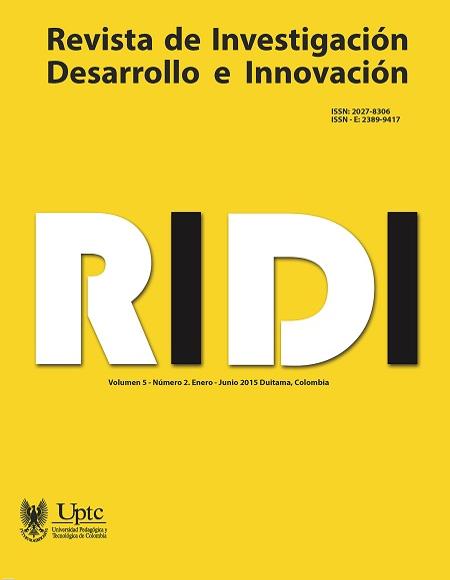Collision detection with V-Collide and PhysX libraries for virtual interaction with haptic interfaces

Abstract
Integration of haptic devices in virtual training applications is a complex task that requires the integration of a variety of software libraries. This paper concentrates on exploring the performance of different collision detection algorithms that will allow the real-time manipulation of mixed (superficial/volumetric) 3D virtual models, and hence the geometric manipulation of these objects in a virtual scene. Using open source software tools, a three-dimensional environment was developed with the potential interaction of force feedback and interaction within virtual components. Virtual interaction tests are presented with two haptic devices, measuring initialization times, frame rates and consumption of RAM. The results allow selecting the PhysX library compared to the V-Collide library, for analysis of collision detection in a virtual environment with tactile feedback.
Keywords
collision detection, haptics, virtual reality.
Author Biography
María Luisa Pinto-Salamanca
Ingeniera Electrónica, Magister en Ingeniería Automatización Industrial, Universidad Pedagógica y Tecnológica de Colombia, Colombia.
Jorge Ivan Sofrony-Esmeral
Ph.D. en Sistemas de Control, Departamento de Ingeniería Mecánica y Mecatrónica, Universidad Nacional de Colombia, Colombia.
Daniel Fernando Jiménez
Ingeniero Mecatrónico. Gerente Domoti S.A.S., Colombia.
References
- Chan, L., & Choi K. (2009). Integrating PhysX and OpenHaptics: Efficient force feedback generation using physics engine and haptic devices. Pervasive Computing (JCPC), 2009 Joint Conferences on. Publisher IEEE. 853 – 858. Doi: 10.1109/JCPC.2009.5420068.
- Geforce. (2010). Technologies: PhysX. Extraído el 1 de octubre de 2010 de http://www.geforce.com/hardware/technology/physx
- Maciel, A., Halic, T., Lu, Z., Nedel, L. P., & De, S. (2009), Using the PhysX engine for physics-based virtual surgery with force feedback. Int. J. Med. Robotics Comput. Assist. Surg., 5: 341–353. doi: 10.1002/rcs.266.
- Moreno, E., & Rodríguez, S. (2002). Detección de colisiones. Un problema clave en la simulación quirúrgica. Especial: Tecnología de Simulación y Planificación.
- Narber, C., & Duric, Z. (2010). Analysis of collision detection algorithms in haptic environments. Haptic Audio-Visual Environments and Games (HAVE), IEEE International Symposium on. 1-4. Doi: 10.1109/HAVE.2010.5623969.
- Novint Technologies Inc. (2014). Falcon Technical Specifications. Extraído el 1 de febrero de 2014 de http://www.novint.com/index.php/novintxio/41
- Ollero, A., García, A., & Gómez M. (2006).Teleoperación y Telerrobótica. PEARSON Prentice Hall, CEA Comité Español de Automática, Madrid, España.
- Pinto, M., Sabater, J., Sofrony, J., Garcia, N., Azorín, J., & Perez, C. (2011). Sistema de entrenamiento para operaciones de reemplazo total de rodilla. Revista TRAUMA. 22(3).
- QGLViewer Features (2010). Extraído el 10 de septiembre de 2010 de http://www.libqglviewer.com/features.html
- Ryden, F., Kosari S., & Chizeck, H. (2011). Proxy method for fast haptic rendering from time varying point clouds. IEEE/RSJ International Conference on Intelligent Robots and Systems. 2614 – 2619, doi: 10.1109/IROS.2011.6094673.
- Ramírez, M. (2005). Estudio e implementación de un algoritmo de detección de colisiones basado en esferas. Cap. 2. PhD Thesis, Universidad de las Américas Puebla, Puebla, México. Maestría en Ciencias con Especialidad en Ingeniería en Sistemas Computacionales.
- Reggiani, M., Caselli, S., & Mazolli, M. (2002). An experimental evaluation of colision detection packages for robot motion planning. Proceedings of the IEEE/RSJ Intl. Conference of Intelligent Robots and Systems EPFL.
- Ruthenbeck, G. & Reynolds, J. (2013). Virtual reality surgical simulator software development tools. Journal of Simulation. 7, 101–108. doi:10.1057/jos.2012.22.
- Sabater, J. M. (2003). Desarrollo de una Interfaz Kinestésica Paralela y Experimentación en Control de Sistemas Hápticos y Teleoperados. PhD thesis, Universidad Miguel Hernández, Elche, Alicante España.
- V-COLLIDE (2013). Collision Detection for Arbitrary Polygonal Objects. Extraído el 8 de junio de 2013 de http://gamma.cs.unc.edu/V-COLLIDE/